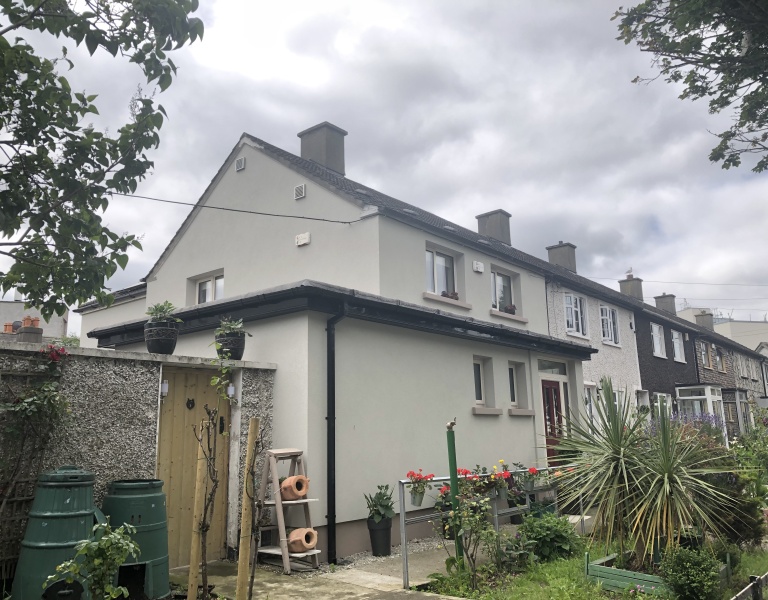Retrofit converts 1960's house into low carbon home
Key achievements
BER A1 achieved
The works achieved a BER uplift from E to A1 BER.
Installed renewable energy technology
Replaced gas central heating system with a heat pump and installed solar pv panels with battery storage, to power household appliances
A healthier, warmer home for the residents
Vastly improved thermal performance of the home making it more comfortable for the homeowner.
Installed mechanical ventilation and heat recovery
This improves air quality and comfort for the residents
About the project
This 126m2 end-of-terrace house in Dublin 7 was built in 1963 using concrete hollow block. Before the deep retrofit project started, the house was cold, draughty and expensive to run. There was no insulation, and the house had a BER of E1, which is typical of homes built in the sixties that have not undergone any building upgrades.
Phase one of the retrofit involved insulating the home to minimise heat loss. External wall insulation was applied and the entire attic floor was fitted with 100mm thick insulation. The existing double glazed windows were replaced with triple glazed and a new composite door with triple glazed side panels replaced the old PVC door.
The next phase was to introduce a renewable heating system to support the transition away from fossil fuels. The gas fired central heating was replaced with an air to water heat pump, providing space heating and 'always on' hot water for the home. An underfloor heating system, zoned heating controls and thermostatic radiator valves (TRV's) replaced an open fire as they worked towards eliminating carbon from the house. The project also included an array of 12 300W solar photovoltaic (PV) panels along with a 2.8 kWh storage battery, allowing the homeowner to power their appliances from a renewable source and store energy that was not used.
A Heat Recovery Ventilation System was installed to sustain a high standard of indoor air quality. All light fittings were replaced with high efficient LED's which are more durable and require less maintenance.
The deep retrofit of a home means carrying out multiple energy upgrades all at once to achieve an A-rated home like this. In this case, disturbance for the occupants of the home was minimal and they were all able to remain living in the home throughout the process. This house is now a more comfortable and healthier place to live in. A-rated homes are the most energy efficient and will tend to have the lowest energy bills.
